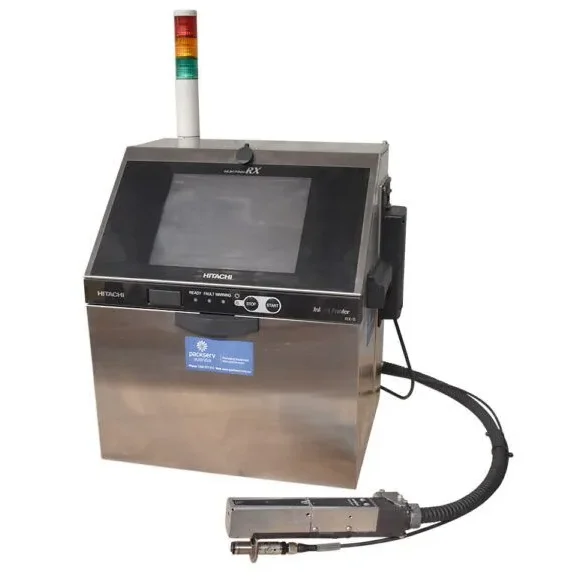In today’s fast-paced industrial landscape, efficiency, precision, and automation are key to maintaining a competitive edge. As manufacturers and production facilities upgrade to smarter technologies, one tool that has become essential across nearly every industry is the Industrial Inkjet Printer. From product labeling and packaging to coding and traceability, these machines are transforming how factories operate. In 2025, investing in a reliable Industrial Inkjet Printer isn’t just an option—it’s a necessity for growth, compliance, and sustainability.
Discover More Insights in This Related Post – Don’t Miss Out!
The Role of Industrial Inkjet Printers in Modern Manufacturing
An Industrial Inkjet Printer is designed for high-speed, high-accuracy printing on various surfaces such as glass, metal, plastic, paper, and cardboard. Unlike traditional printing systems, these printers use non-contact technology, meaning they can print on uneven or moving surfaces without sacrificing quality.
Factories use inkjet printers for product coding (like date, batch, and lot numbers), barcoding, branding, and even full-colour packaging. This versatility makes them an integral part of any modern production line. As demand for customized and traceable packaging grows, the need for a dependable Industrial Inkjet Printer has never been greater.
1. Enhancing Production Efficiency
In manufacturing, every second counts. Traditional labeling and printing methods often cause delays, maintenance issues, or inconsistent print quality. In contrast, an Industrial Inkjet Printer operates with remarkable speed and reliability. These machines can print thousands of items per hour with minimal human intervention, reducing downtime and increasing overall productivity.
Most modern printers also come with automated maintenance features, such as self-cleaning printheads and ink monitoring systems. This ensures uninterrupted operation, allowing factories to maintain a continuous production flow—an essential advantage in 2025’s competitive market.
2. Cost-Effective and Sustainable Printing
Another major benefit of an Industrial Inkjet Printer is cost-efficiency. Unlike older technologies that require pre-printed labels or expensive consumables, inkjet printers apply information directly onto the product or packaging. This eliminates label waste and storage costs while allowing for on-demand printing.
Additionally, many manufacturers are now adopting eco-friendly inks that reduce environmental impact without compromising print quality. As factories aim to meet sustainability goals and comply with government regulations, upgrading to a modern Industrial Inkjet Printer helps reduce carbon footprint and operational costs at the same time.
3. Improved Product Traceability and Compliance
In industries such as food, pharmaceuticals, and electronics, traceability is not just a trend—it’s a legal requirement. Every product must be marked with production data, expiry dates, and batch codes. An Industrial Inkjet Printer ensures that this information is printed clearly and permanently, even in challenging environments.
Inkjet printing systems are capable of integrating with factory automation software and databases, enabling automatic printing of variable data in real-time. This digital connectivity ensures accuracy, compliance with international standards, and easy recall management if issues arise.
4. Versatility Across Industries
The adaptability of the Industrial Inkjet Printer is one of its strongest assets. Whether you run a beverage plant, electronics assembly unit, pharmaceutical line, or automotive parts factory, these printers can handle diverse printing needs.
- Food & Beverage: Date codes, barcodes, and nutritional information printed directly on bottles, cans, or cartons.
- Pharmaceuticals: Batch numbers, dosage instructions, and tamper-proof labeling.
- Electronics: Part numbers, QR codes, and anti-counterfeit marks on components.
- Packaging: Brand logos and promotional messages in high-resolution colour.
With their ability to print on almost any substrate, Industrial Inkjet Printers eliminate the need for multiple printing systems, saving space and simplifying operations.
5. Precision and Print Quality
Modern Industrial Inkjet Printers deliver superior print quality even at high speeds. Thanks to advanced droplet control technology and fine-resolution nozzles, the printed text, barcodes, and graphics remain sharp and durable. This precision enhances brand presentation and reduces the risk of misreads during automated scanning or logistics tracking.
In 2025, where automation and AI-driven quality control systems dominate the factory floor, having precise and consistent prints ensures smooth integration across every part of the supply chain.
6. Easy Integration and Smart Connectivity
The latest Industrial Inkjet Printers are built for the Industry 4.0 era. They can seamlessly integrate into production lines, PLC systems, and IoT networks, providing centralized monitoring and control. Operators can adjust print settings, monitor ink levels, and track production statistics remotely through intuitive dashboards.
This connectivity helps prevent downtime through predictive maintenance alerts and remote troubleshooting. By combining hardware reliability with smart software, factories can achieve both operational efficiency and digital transformation.
7. Meeting Growing Demand for Customization
Consumers today expect personalized products and packaging. Whether it’s unique serial numbers, promotional QR codes, or localized branding, the Industrial Inkjet Printer provides the flexibility to print variable data quickly and accurately.
This capability is invaluable for short production runs or seasonal packaging. Factories no longer need to store massive inventories of pre-printed labels—they can print directly on demand, saving time and money while responding instantly to market trends.
8. Future-Proofing Your Factory
As the manufacturing sector continues to evolve, automation, traceability, and sustainability will define success. An Industrial Inkjet Printer is an investment that ensures your factory stays ready for these challenges.
With continuous innovations in ink formulations, printhead technology, and digital controls, inkjet systems are becoming even more capable and cost-efficient. By 2025, factories without this technology risk falling behind competitors who can deliver faster, cleaner, and more compliant printing solutions.
Conclusion
In 2025, an Industrial Inkjet Printer is more than just a printing tool—it’s a cornerstone of smart manufacturing. It enables faster production, reduces waste, ensures compliance, and supports digital transformation across industries. Whether you run a small-scale workshop or a large automated facility, upgrading to a modern Industrial Inkjet Printer is one of the smartest investments you can make to enhance efficiency and remain competitive.
Check Out Our Featured Post – Handpicked Just for You!






